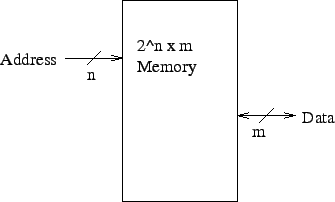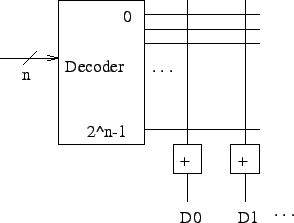
Tom Kelliher, CS 220
May 5, 2008
Homework due Wednesday!
Look over Chapter 8.
Counters
Details on RAM.


Minterms, fusible links.
How do you use for combinational functions?
Programming/writing resets a bit (to 0).
Similar to pull-down plane in a NOR gate, hence the name.
![\includegraphics[width=4in]{Figures/norLayout.eps}](may05img3.png)
``Drop-in'' replacement for ROM (system BIOS, other firmware).
Block may consist of 64 pages of 2 KB each. Writes can be done on a per page basis; erases on a per block basis.
![\includegraphics[width=3in]{Figures/flashProgramming.eps}](may05img6.png)
![\includegraphics[width=3in]{Figures/flashErase.eps}](may05img7.png)
Remap blocks around bad spots, or to level erasure effects. (Per block erasure counters needed).
Checksums used to detect and correct block failures.
Used for caches. Fast. Not dense. High power.
Write strobe with respect to the clock signal. Importance of address bus settling before write asserts.